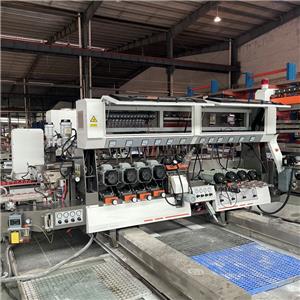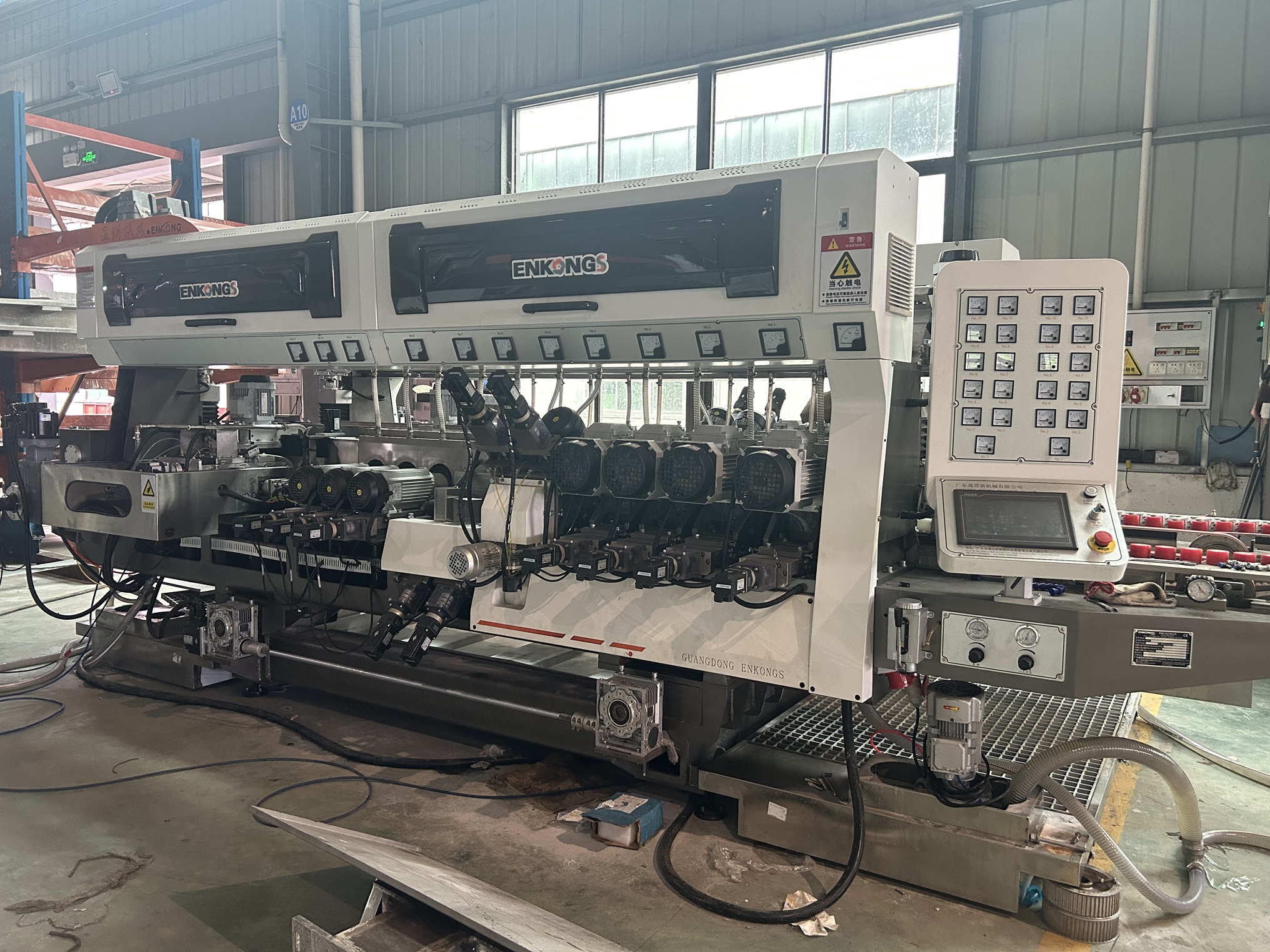The Hidden Costs of Outdated Technology
In the competitive world of glass manufacturing, precision and speed are non-negotiable. Yet, many workshops cling to aging equipment, unaware of how much their glass edging machine sabotages productivity, quality, and profitability. A 2023 industry survey revealed that 42% of fabricators using machines older than 5 years experience at least 30% slower output compared to modern systems. If your production line feels stuck in second gear, here are five undeniable signs your glass edging machine is the bottleneck—and how upgrading can transform your workflow.

1. Inconsistent Edge Quality: Are Your Bevels Rough or Uneven?
A glass edging machine that struggles with precision is a liability. Outdated models often lack advanced CNC controls, leading to jagged edges, uneven bevels, or micro-cracks. These flaws force operators to rework pieces or downgrade them to lower-value products.
The Domino Effect on Downstream Processes:
Poor edging quality doesn’t just waste time—it strains your entire workflow. For instance, a poorly beveled edge forces your glass polishing machine to work overtime to smooth imperfections, increasing wear on abrasive belts and consuming 20–30% more energy. Worse, subpar edges can compromise structural integrity, risking breakage during tempering or laminating steps handled by your glass processing machine.
The Fix: Modern glass edging machines use diamond-coated grinding heads and AI-driven calibration to achieve tolerances as tight as ±0.1mm. Pairing these with a high-end glass processing machine ensures seamless transitions from cutting to edging, eliminating rework. 
2. Slow Cycle Times: Why Does Every Job Feel Like a Marathon?
If your glass edging machine takes 10 minutes to finish a simple straight edge—while competitors do it in 3—you’re bleeding revenue. Older machines often lack multi-axis automation, requiring manual adjustments between cuts.
The Speed vs. Quality Myth:
Some fabricators fear that faster glass edging machines sacrifice precision. However, advancements like adaptive pressure control allow modern systems to maintain quality at double the speed. For example, the AlphaEdge Pro 9.0 processes 50% more glass sheets per hour than 2018 models while reducing edge defects by 18%.
Integration Wins: Pairing a high-speed glass edging machine with an automated glass processing machine (e.g., systems with robotic loaders) can slash cycle times by 40%. This synergy ensures that polished edges move directly to a glass polishing machine without bottlenecks.
3. Frequent Downtime: Are Breakdowns Eating Your Profits?
A glass polishing machine that requires weekly repairs isn’t just annoying—it’s a financial black hole. Overheating motors, misaligned belts, and software glitches can halt production for hours.
The True Cost of Downtime:
One automotive glass supplier reported losing $12,000 per day when their 10-year-old glass polishing machine failed mid-order. Reactive maintenance costs for older machines are 3x higher than preventive plans for modern systems.
Future-Proofing with IoT: Newer glass edging machines embed IoT sensors that predict failures before they happen. For instance, vibration sensors alert technicians to bearing wear, while cloud-connected glass processing machines auto-order replacement parts.
4. Limited Material Compatibility: Can’t Handle Tempered or Curved Glass?
Demand for curved shower enclosures and automotive glass is booming—but if your glass edging machine can’t handle these shapes, you’re missing out. Traditional machines designed for flat glass often lack the articulation to edge radii under 100mm.
The Role of Multi-Functional Systems:
Modern glass processing machines combine edging, drilling, and polishing in one unit, ideal for complex projects. For example, the FlexEdge C Series adjusts grinding angles dynamically, enabling flawless edges on 6mm tempered glass or 3D curved panels.
Polish Perfectly, Every Time: Even the best glass edging machine needs support. Pair it with a glass polishing machine featuring variable RPM controls to adapt to delicate edges on laminated or coated glass.
5. Sky-High Energy Bills: Is Your Machine a Power Hog?
Older glass edging machines with DC motors or hydraulic systems can consume up to 15 kW per hour—three times more than servo-driven models.
Green Tech = Lower Costs:
Upgrading to an energy-efficient glass edging machine with regenerative braking (reclaiming 20% of energy during deceleration) can save $8,000+ annually. Some systems even integrate with solar-powered glass processing machines for net-zero workshops.
Case Study: From Struggling to Dominating in 6 Months
Phoenix Glassworks replaced their 2015 glass edging machine with a CNC-equipped model and saw:
- 55% faster edging cycles
- 90% reduction in edge-defect returns
- 35% lower energy use after integrating with their glass polishing machine and glass processing machine.
The Upgrade Equation
A modern glass edging machine isn’t an expense—it’s an investment that pays off in faster throughput, flawless quality, and leaner operations. When paired with a high-performance glass processing machine and precision glass polishing machine, your workshop can tackle premium projects, slash waste, and leave competitors in the dust.

